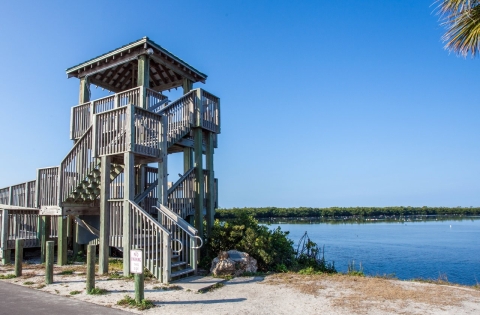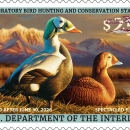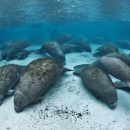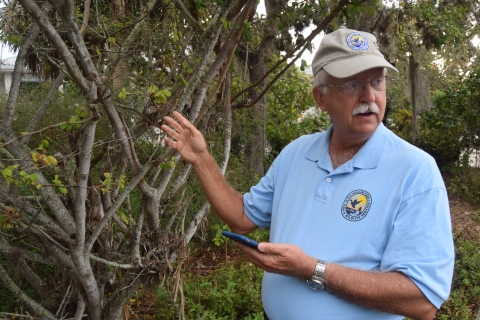Visit Us
J.N. "Ding" Darling National Wildlife Refuge welcomes all. Whether it is your first time visiting or you bike through every day, Ding has something for everyone!
The best place to start is the FREE Visitor and Education Center. There you can get information and brochures, visit the Nature Store, explore our exhibits and visit America's best restrooms. Exhibits feature information about our ecosystems, the work of Jay Norwood "Ding" Darling, migratory flyways and a hands-on area for children.
Then you can walk, bike, drive the four-mile Wildlife Drive, access three walking trails and two canoe launches from it. You can walk or bike the Bailey Tract too, an interior part of the refuge dominated by freshwater plants and wildlife. The refuge is home to more than 245 bird species, so birdwatching and photography are fabulous. Or sign up for a tram tour offered by Tarpon Tay Explorers to see the Wildlife Drive. Stand-up paddle boarding, kayaking, and more are available at Tarpon Bay Explorers.
The Wildlife Drive, Visitor and Education Center, Nature Store, and Indigo Trail are CLOSED every Friday.
Location and Contact Information
About Us
National wildlife refuges offer us all a chance to unplug from the stresses of daily life and reconnect with our natural surroundings.
What began as a sandbar is now Sanibel, a barrier island fringed with mangrove trees, shallow bays, and white sandy beaches located off the southwest coast of Florida. For over 2,000 years the Calusa Indians made the lush island, with its ready source of food from the sea, their home. By the mid-1800s, European settlers arrived and soon displaced the Calusa tribe. For years, the island was mainly used by farmers until a fierce hurricane in 1926 destroyed the agriculture industry. Construction of the Sanibel causeway in 1963 opened way for tourism on the island. Jay Norwood Darling was instrumental in the effort to block the sale of a parcel of environmentally valuable land to developers on Sanibel Island. At Darling's urging, President Harry S. Truman signed an Executive Order creating the Sanibel National Wildlife Refuge in 1945.
The refuge was established to safeguard and enhance the wildlife habitat of Sanibel Island, to protect endangered and threatened species, and to provide feeding, nesting, and roosting areas for migratory birds. The refuge is part of the largest undeveloped mangrove ecosystem in the United States and is world famous for its spectacular migratory bird populations. In 1967, the refuge was renamed for conservation pioneer Jay Norwood “Ding” Darling, who was instrumental in its founding. More than 40 percent of the refuge is Congressionally designated wilderness.
Tours
Interpretive tours are offered throughout the year by staff and volunteer naturalist. Winter tours and programs begin in January and continue through mid-April. Summer tours and programs begin in June and end in August. All refuge led tours are by reservation only on dingdarling.eventbrite.com. Opportunities are added regularly, so check back weekly to see what there is!
Take a tram byTarpon Bay Explorers on Tuesdays, Thursdays, and Saturdays,an exciting 90 minute tour along the Wildlife Drive with a guided naturalist.
What We Do
Wildlife conservation is at the heart of the National Wildlife Refuge System. It drives everything on U.S. Fish and Wildlife Service lands and waters managed within the Refuge System, from the purposes for which a national wildlife refuge national wildlife refuge
A national wildlife refuge is typically a contiguous area of land and water managed by the U.S. Fish and Wildlife Service for the conservation and, where appropriate, restoration of fish, wildlife and plant resources and their habitats for the benefit of present and future generations of Americans.
Learn more about national wildlife refuge is established to the recreational activities offered to the resource management tools used. Using conservation best practices, the Refuge System manages Service lands and waters to help ensure the survival of native wildlife species.
Our Organization
Our Species
The refuge was created to safeguard and enhance the pristine wildlife habitat of Sanibel Island, to protect endangered and threatened species, and to provide feeding, nesting, and roosting areas for migratory birds. Today, the refuge provides important habitat to over 245 species of birds.
Get Involved
Whether you want to further conservation, learn more about nature or share your love of the outdoors, you’ve come to the right place. National wildlife refuges provide many opportunities for you to help your community and fish and wildlife by doing what you love.
National wildlife refuges partner with volunteers, youth groups, landowners, neighbors and residents of urban and coastal communities to make a lasting difference.
Projects and Research
The J.N. "Ding" Darling National Wildlife Refuge achieves its goal of conserving wildlife by managing wildlife habitat. Refuge managers and biologists make concerted efforts to restore, enhance, and protect habitat types against the ever changing conditions found on the Refuge.








